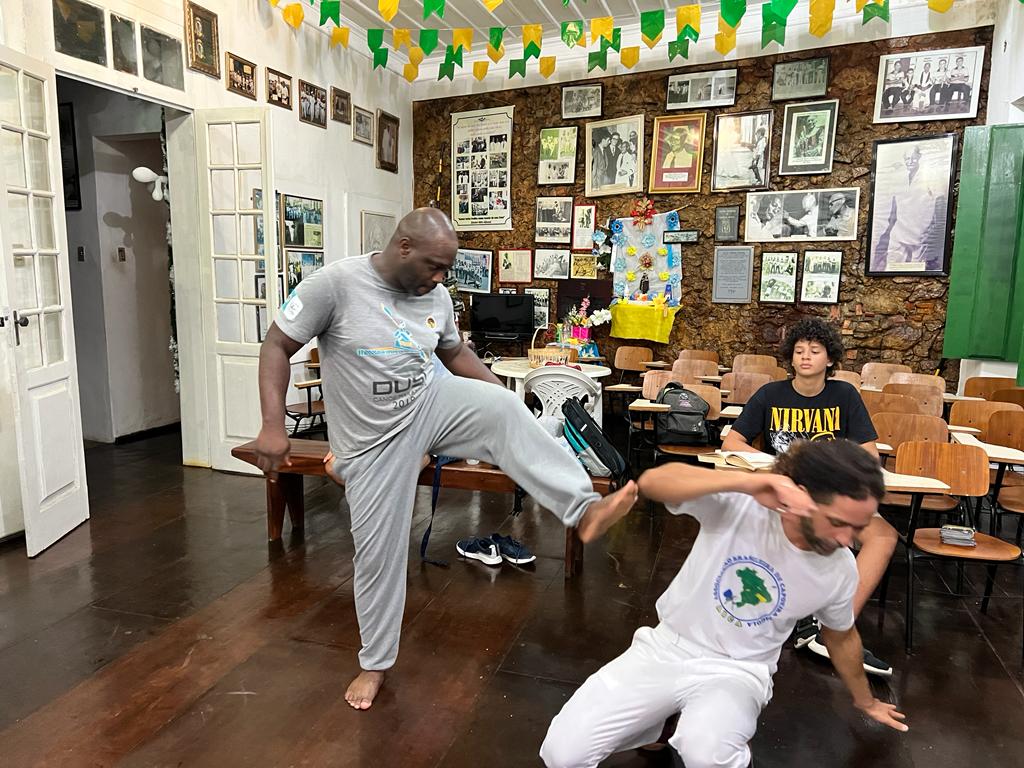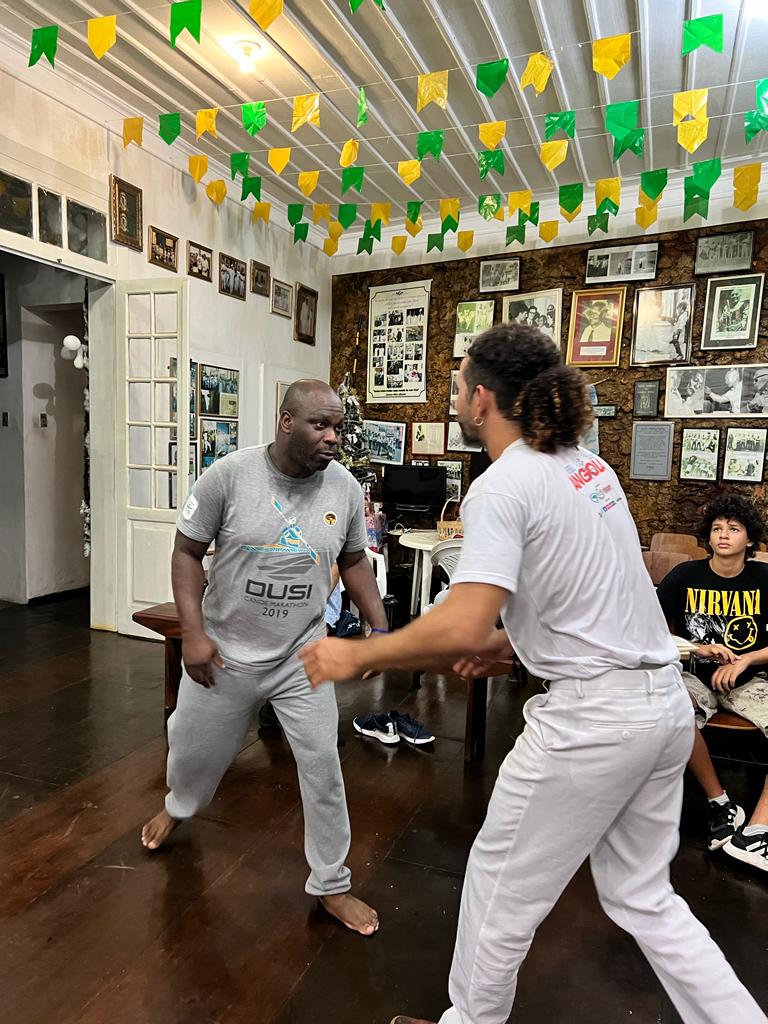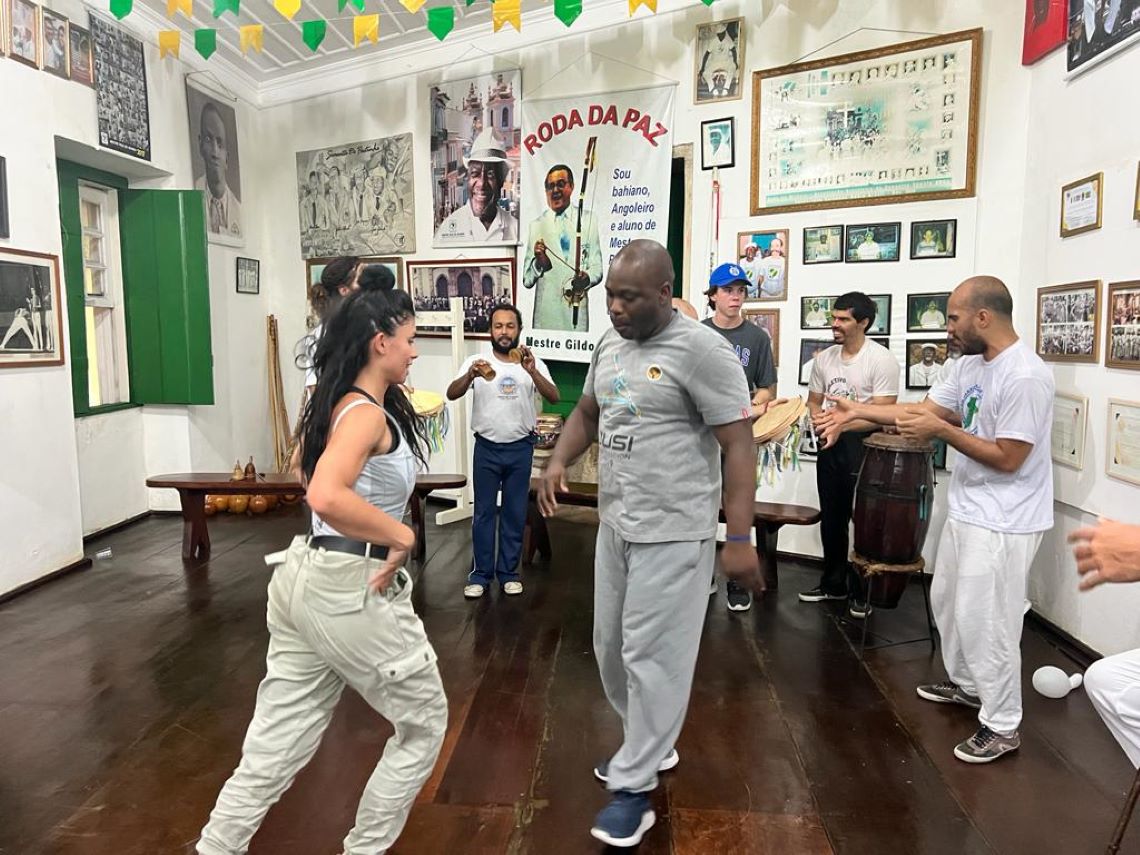Adesoji’s encounter with Capoeira
When I decided to embark on my study abroad trip to Salvador, Bahia, Brazil over the winter break in 2023, I did not know that my foot was going to be set in the birthplace of modern Capoeira, Salvador. It marked my first contact with an art peculiar to Brazil, Capoeira!
When I walked into the ABCA hall in the historic district of Pelourinho, Salvador, I found alert, agile, and physically fit men and women playing some instruments and singing. Shortly afterward, our attention was sought by a man who turned out to be the instructor and introduced himself as Paulo. The journey into the world of practicing Capoeira for me began, this martial art-infused dance and music commenced as we were taken through varying exercises to loosen up before the start of the different components of the art. My attention was caught up in its acrobatic, and athletic style.

Oral tradition has it that Capoeira originated in the 16th century, sometimes referred to as a martial art, a dance, and sometimes even a game. I found it to be all of these and more, at least I felt the music was spiritual. It is a cultural symbol for Brazilians, Capoeira is unique and I found it fascinating.
It has been suggested that capoeira was created during the 16th century by enslaved people who were taken from West Africa to Brazil by Portuguese colonists. Since the slaves brought from Africa were prohibited from celebrating their cultural customs and forbidden from practicing martial arts, it’s thought capoeira emerged as a way to bypass these two imposing and subjugating laws.
They used the musical and rhythmic elements of the art to disguise violent kicks as passionate dance movements and its combination of West African cultures saved it from being identified as an attempt to preserve any specific tradition. That was how capoeira came to life as a survival tool, not only for self-defense but also for cultural identity.
Capoeira is performed in varying contexts, from entertaining choreographed dances to competitions where one competitor attempts to make the other fall out of time with the music, capoeira is also popular because it teaches basic martial arts and acrobatics.

Eventually, many enslaved people used capoeira to escape their oppressors and formed rebellion groups known as quilombos, creating communities outside Portuguese control on the outskirts of major cities. These communities stood as strongholds against the Portuguese and many are famous for the courageous defenses they put up.
The Portuguese tried with so much difficulty to control capoeira, and with the growing cities that were forming during the late 17th and early 18th centuries, larger populations resulted in larger communities of enslaved people, and in smaller areas. This resulted in an expanding social culture for enslaved people, and capoeira dominated as a popular form of entertainment. While there were examples of it being used for self-defense, capoeira was mostly performed in competition or for leisure, creating a difficult contrast for the ruling class. Despite this, capoeira dancers were often punished for practicing it, before it became legal and allowed again in the early 20th century, and the art form lived on regardless of its many challenges until the 21st century when Adesoji encountered the art.
